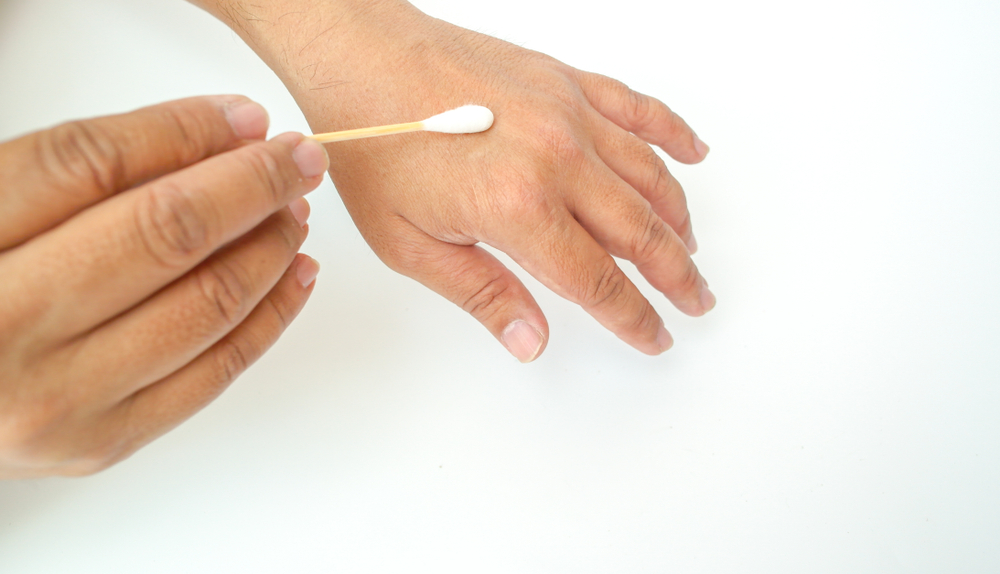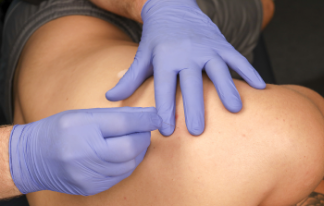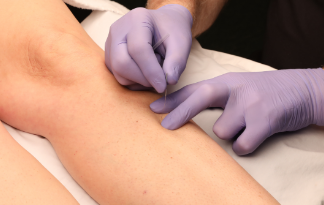Sometimes, our dry needling students wonder why Myopain Seminars does not recommend disinfecting the skin before dry needling. This question is also raised in other areas, such as acupuncture and vena punctures. According to the World Health Organization’s best practice for intradermal, subcutaneous, and intramuscular needle injections and several recent studies and  guidelines (British Acupuncture Federation, 2023; Forum for Injection Technique UK, 2016; Hoffman, 2001; Hutin et al., 2003; Tandon et al., 2017; World Health Organization, 2010), patient skin disinfection is not usually required before dry needling if the skin is visibly clean.
guidelines (British Acupuncture Federation, 2023; Forum for Injection Technique UK, 2016; Hoffman, 2001; Hutin et al., 2003; Tandon et al., 2017; World Health Organization, 2010), patient skin disinfection is not usually required before dry needling if the skin is visibly clean.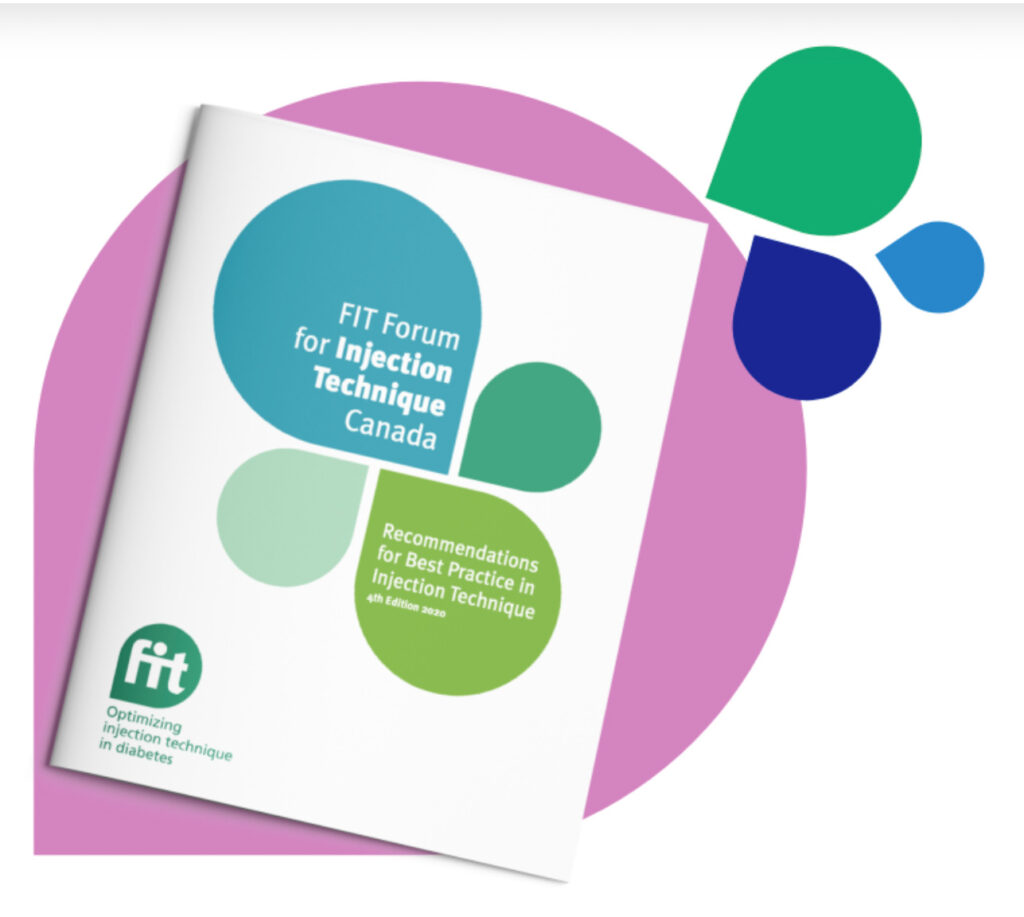
Resident skin bacteria are unlikely to lead to infection if host immunity is not compromised (Hoffman, 2001); however, decreased barrier immunity is more common in the elderly, possibly increasing their susceptibility to infections (Chambers & Vukmanovic-Stejic, 2020). Many countries do not have formal regulations regarding skin disinfection for needling procedures, but it is required in some jurisdictions.
The National Acupuncture Foundation recommends disinfecting the skin with 70% isopropyl alcohol before needling (Given, 2009). The British Acupuncture Federation Code of Safe Practice recommends using 70% isopropyl alcohol or products that contain 0.5% chlorhexidine before needling in ‘areas of the body where moisture or exudates may collect, such as the groin and genital area, ears, feet, under arms and the area below the breasts, near the mouth, nose, scalp, and other hair covered areas’ (British Acupuncture Federation, 2023).
In contrast, Dutch guidelines align with the World Health Organization and do not recommend disinfecting the skin, except when using semipermanent needling or performing ear acupuncture (Werkgroep Infectiepreventie (WIP), 2008). If the skin is visibly soiled, it should be washed with warm water and soap and dried before dry needling. Clinicians should not needle into joints or bursae. During dry needling, clinicians should only touch the needle at the handle and avoid touching the shaft. If this occurs, the needle should be removed, disposed of, and replaced with a fresh sterile needle. Multipack needles are not recommended for dry needling as their use increases the likelihood of touching the needle shaft.
Immunocompromised patients may not always be suitable for dry needling, requiring special consideration. For example, a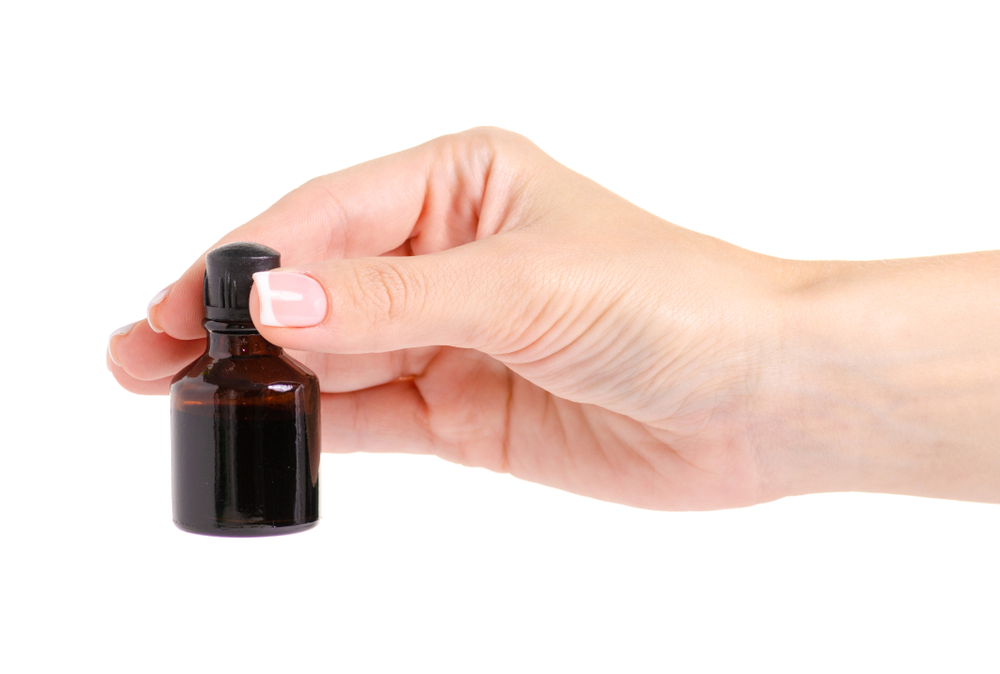 patient undergoing chemotherapy may have a very low white blood cell count. If dry needling is considered suitable, skin preparation with a sterilizing solution such as 2% iodine in 70% alcohol should be used and left on the skin to dry for at least 2 minutes (Australian Society of Acupuncture Physiotherapists, 2013).
patient undergoing chemotherapy may have a very low white blood cell count. If dry needling is considered suitable, skin preparation with a sterilizing solution such as 2% iodine in 70% alcohol should be used and left on the skin to dry for at least 2 minutes (Australian Society of Acupuncture Physiotherapists, 2013).
Yet, clinicians working in large institutions often must disinfect the skin before any needling procedure following guidelines from the infection control department. Some patients may also request to have their skin disinfected. Of course, there is no reason not to disinfect the skin under these circumstances.
Hope to see you soon at a Myopain Seminars Dry Needling course. Just make sure your skin is visibly clean…..
Dry Needling Course Series
The Dry Needling 1 course is an excellent starting point for learning the fundamentals of dry needling therapy. With a focus on the safe and effective application of dry needling techniques, you will gain a solid understanding of myofascial trigger points, needling techniques, precautions, and how to apply these techniques in clinical practice.
The Dry Needling 2 course is an intermediate-level course that provides in-depth knowledge and hands-on training for dry needling techniques of the extremities, including the upper and lower body. By completing this course, you will expand upon the skills you acquired in the DN-1 course and better understand the application of dry needling for managing musculoskeletal pain and dysfunction.
The Dry Needling 3 course is the final course in the series and the last step before becoming a Certified Myofascial Trigger Point Therapist – Dry Needling (CMTPT/DN). This course offers an in-depth study of advanced dry needling techniques for hand muscles, several lower extremity and foot muscles, the craniofacial and craniomandibular muscles, and more.
References
Australian Society of Acupuncture Physiotherapists. (2013). Guidelines for safe acupuncture and dry needling practice. Australian Society of Acupuncture Physiotherapists
British Acupuncture Federation. (2023). Code of Safe Clinical Practice. London, British Acupuncture Federation
Chambers, E. S., & Vukmanovic-Stejic, M. (2020). Skin barrier immunity and ageing. Immunology, 160(2), 116-125. https://doi.org/10.1111/imm.13152
Forum for Injection Technique UK. (2016). The UK injection and infusion technique recommendations.
Given, S. (2009). Clean needle technique manual for acupuncturists; Guidelines and standards for the clean and safe clinical practice of acupuncture (6 ed.). Chaplin: National Acupuncture Foundation.
Hoffman, P. (2001). Skin disinfection and acupuncture. Acupuncture in Medicine, 19(2), 112-116. https://doi.org/10.1136/aim.19.2.112
Hutin, Y., Hauri, A., Chiarello, L., Catlin, M., Stilwell, B., Ghebrehiwet, T., Garner, J., & Injection Safety Best Practices Development Group (2003). Best infection control practices for intradermal, subcutaneous, and intramuscular needle injections. Bulletin of the World Health Organization, 81(7), 491–500.
Tandon, N., Kalra, S., Balhara, Y. P. S., Baruah, M. P., Chadha, M., Chandalia, H. B., . . . Wangnoo, S. K. (2017). Forum for Injection Technique and Therapy Expert Recommendations, India: The Indian Recommendations for Best Practice in Insulin Injection Technique, 2017. Indian Journal of Endocrinology and Metabolism, 21(4).
Werkgroep Infectiepreventie (WIP). (2008). Infectiepreventie in de acupunctuurpraktijk. Leiden, Werkgroep Infectiepreventie
World Health Organization. (2010). WHO best practices for injections and related procedures . Geneva, World Health Organization


